#PHENOCRYST
Explore tagged Tumblr posts
Text
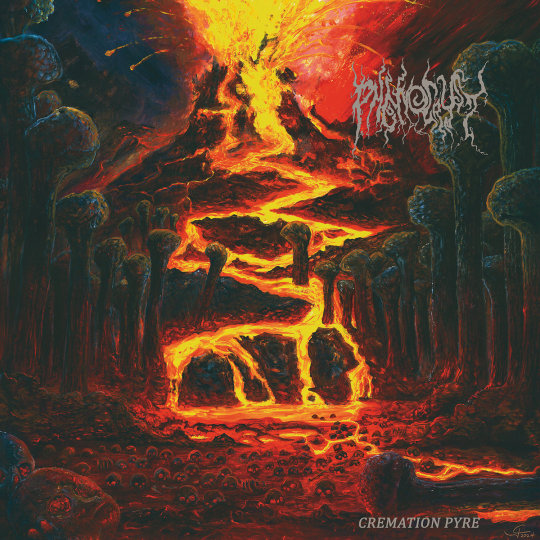
Phenocryst - Cremation Pyre
Death Metal from Lisbon, Portugal
Hailing from Portugal, PHENOCRYST was formed in early 2020, during the recording of their debut EP. The band is based in the outskirts of Lisbon, and the origin of such conjuration is a rigorous consequence of a vibrant underground activity in the city. The band wanted to create the foundation of a death metal act crossing other influences like doom and some psychedelic vibes, to illustrate soundscapes of disastrous, catastrophic, and annihilating volcanic and natural events. There are not many artists actually singing about this specific topic, if any, and therefore, the lyrical content is also something to explore. As such, the moniker PHENOCRYST is fitting.
1. Pinnacle of Death 04:58 2. Astonishing Devastation 06:05 3. Pyres of the Altar 04:47 4. Incandescent Debris 03:51 5. Embers of an Ancient Fire 06:31 6. Volcanic Winter 06:05 7. Fogo nas Entranhas 04:40 8. Burial Swamps 02:04
Release date: August 30th, 2024 via @bloodharvestrecords
#portuguesedeathmetal#phenocryst#deathmetal#deathmetalband#oldschooldeathmetal#melodicdeathmetal#technicaldeathmetal#newdeathmetalsongs#brutaldeathmetal#extremedeathmetal#blackdeath#blackdeathmetal#blackeneddeathmetal#deathmetalpromotion#thrashmetal#deaththrash#thrashdeath#extrememetal#deathcore#metalcore#grindcore#grindcoreband#deathdoom#deathdoommetal#supporttheunderground#newalbum#newalbum2024#albumcover#bandcamp#Bandcamp
2 notes
·
View notes
Note
favorite word?
i can’t pick favourites it’s not fair to everyone else. but lately i have been by captivated by the vocabulary invented for the (biblical in my opinion) task of objectively describing and categorizing rocks … there's slate, phyllite, schist, blueschist, gneiss….Mudrock protolith…Carbonaceous sediment...Slaty cleavage; crenulations.. phenocrysts… Luster, lustrousness, something hard, something secreted, something leaving behind a streak of surprising color. Garnets squeezed out of grey matrices, micas sweated out with the exertion of transformation… im soooo here . Im in here im looking at a rock and Im wanting so badly to know it that I take it to the geology textbook and select an abstraction for it like as suit tailored to it as well as I can and I realize how much more time I want to spend looking at rocks now that I am beginning to learn their names, even as I realize that it is only the names giving the objects their objectivity, and that it might be easier to experience the strangeness of the world if I could forget its names, but I won't forget its names, because then I wouldn't be able to talk about it and it gets boring not being able to talk about it, and if it gets boring, then you might stop paying attention..its a paradox. There is a rock called reticulite that looks like iridescent foam. Exactly like a lump of glittering rainbow foam scooped out of a bubble bath post-bath bomb, but it comes out of volcanoes, specifically, it is only formed from lava fountains whose basaltic spew pierces the clouds like high castles -- at least 1000 feet high is the number often given, the height necessary to reach the speeds necessary to suddenly exsolve gases in the basalt, as if the air in its lungs exploded outwards and rendered a solid thing nothing but a lattice of itself. It is the lightest rock in the world, much lighter than pumice but it doesn't float. It defies the idea of solidity, you can hold it in your hand (although it crumbles into a smaller version of itself whenever it is touched) but water pours right through it and it sinks like a fishing net would sink. Then it dissolves like cotton candy. Its a beautiful gold color, a gold latticework, a thought bubble ejected from the inside of the earth..But you can't let yourself believe any of this. Anything I say might not be true because this is about the words, although most of this is true, but I think its better to react with disbelief. That's my recommendation
Also I love, lately, words related to castles and bacterial colonies of luxury and the associated equally extravagant acts of self-protection or self-comfort: Crenellations and machicolations and spirals and balustrades and pediments and cruciforms and chandeliers and lacework and swagging and frosting
early paleozoic eras: cambrian, ordovician, silurian, devonian. But not the american state or dinoasaur themed ones except under special consideration
Sweeteners: sugar, gel, gels, jelly, creams, paste, solvents
And this is the set of all the other words that I love that I didn't name here represented by the heart symbol: <3
44 notes
·
View notes
Text


Granite with Rapakivi texture (circled in white). Rapakivi texture is characterized by ovoidal alkali feldspar phenocrysts (pinkish core) with a rim of plagioclase (white). "Rapakivi" comes from the Finnish word "rapautuvakivi" and means "disintegrating rock" or "crumbly stone".
44 notes
·
View notes
Text
fob as geologists
this is so incredibly fucking niche but I've been thinking about it all day so fuck it. fob as geology disciplines.
pete would be an igneous petrologist. doesn't love metamorphics but he's willing to deal with them. got into it because volcanoes=cool and it spiraled from there. has a particular love for mafic rocks, especially basalts. there's something wonderful about a rock that's underwhelming to look at [pure black, aphanitic, no visible phenocrysts] but to look inside it and see something absolutely beautiful. makes his own shitty thin sections that never hit the thirty micrometer mark but he keeps every single slide in a little box next to a pile of lab notebooks.
patrick cries whenever arcgis pro crashes on him. he's not great at remembering to save every other click like most people learn to. he gets too sucked into it, and before he knows it, he's lost six different highly specific feature classes on the map he was working on. generally prefers to log data rather than actually make the maps, but when one of the other guys has an excel sheet of sixty sites with rock data, he puts a bit of extra effort in so they've got something nice to look at. smiles when he sees his maps in their research papers and presentations. absolutely hates field work and will do anything to not have to put his boots on. definitely not because they always come untied.
joe is a paleoclimate dude. he's got soil cores on every table he's got in his lab and a collection of fossils he's found over the years. has a mason jar full of brachiopods that he adds to. occasionally goes on an arctic tour to get his hands on an ice core and doesn't shut up about it for the next year. is the only one of the guys to actually engage with field work for most of his job.
andy is such a geophysicist. specifically planetary geology. yes I'm mildly projecting here but he reminds me so much of the geophysicists and planetary scientists I've worked with over the years that it's uncanny. bitches with patrick about arcgis vs. jmars [jmars>>>] but when he's stuck on this planet, he spends his weekends tromping around a forest setting up resistivity lines to see what's under his feet. is the right kind of insane to be into caving but is sane enough to not go full nutty putty. tries to get the other guys to cave with him and pete's the only one willing to go anywhere you can't just walk. 3d prints craters for funzies.
14 notes
·
View notes
Text
Crystals for The Desolation
Warm colors:
Citrine
Carnelian
Sunstone
Heliodor
Amber
Goldstone
Apatite
Pyrite
Halite
Kunzite
Sardonyx
Vanadinite
Phenocrysts
Orange Anatase
Yellow Chalcopyrite
Red Jasper
Fire Agate
Fire Opal
Rose Quartz
Tangerine Quartz
Black-based:
Lava stone
Obsidian
Hemetite
Charcoal
Onyx
#og.txt#popculture magic#paganism#pop culture paganism#tma paganism#tma pcp#the magnus archives#tma#the desolation
15 notes
·
View notes
Text
Went to a rock pile today which is fun because some of them I'm like "yeah that's a fossil. No I don't know of what" and some it's like "that's gneiss" and then others I'm like "I found a piece of granite with orthoclase phenocrysts that have plagioclase reaction rims and biotite inclusions in a quartz and feldspar matrix"
#rock ID is weird sometimes.#idk what half these things are and then sometimes it's like regurgitating a dictionary
17 notes
·
View notes
Text
Rock Swag Tournament Round 1: Igneous Rocks Part 4
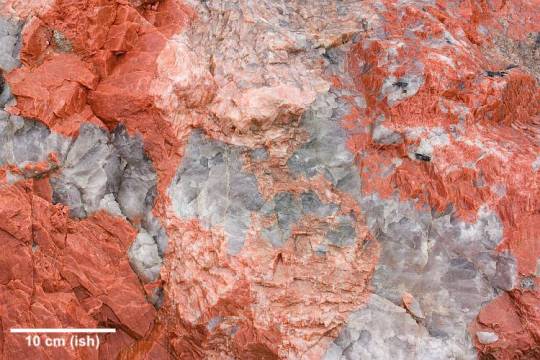

So these are two pretty fun igneous rocks, and the reason they're paired up is because neither of these two rocks has a defined composition. Granite is felsic, basalt is mafic, etc.
Now, many pegmatites are generally felsic, but it's not a requirement for pegmatites. Instead, what defines a pegmatite are the massive crystals it contains! I was taught, by a professor who does her research on pegmatites, that a good rule of thumb for when a rock is a pegmatite is when individual grains are bigger than a US quarter, but I've seen sources say grains have to be bigger than 1 cm. And, of course, in the sample shown above, those grains are more than 10 cm big.
All of that being said, one of the submitters to this competition ALSO has PhD research experience on pegmatites! I'll let them take it from here.
Pegmatites can have ENORMOUS crystals, rare minerals, and also gorgeous textures! Gemstone varieties of tourmaline, beryl, kunzite, etc. can come from pegmatites! My PhD research is on pegmatites XD
If this person would like to provide more information about pegmatites, I would be thrilled to hear it!
As for porphyry, while there is no compositional requirement, certain rocks like andesite and dacite are commonly porphyritic. One submitter actually sent in a specific type of porphyry called a rhomb porphyric (in English), named for its rhombic phenocrysts (the chocolate chips in the rock-cookie).

Here is what they have to say:
Found in Norway, east-Africa and Antartica. They look amazing! and can be found here in Denmark as a result of ancient glacier-movements - I am always super hyped to find one of these beauties. Plus the Danish name (rompeporfyr) sounds alot like rumpe-på-fyr meaning ass-on-guy (a more moderne translation might be Caked Up Dude) and I have been in love with that fact, and that stone, since I found out in grade 3.
Happy voting!
123 notes
·
View notes
Text

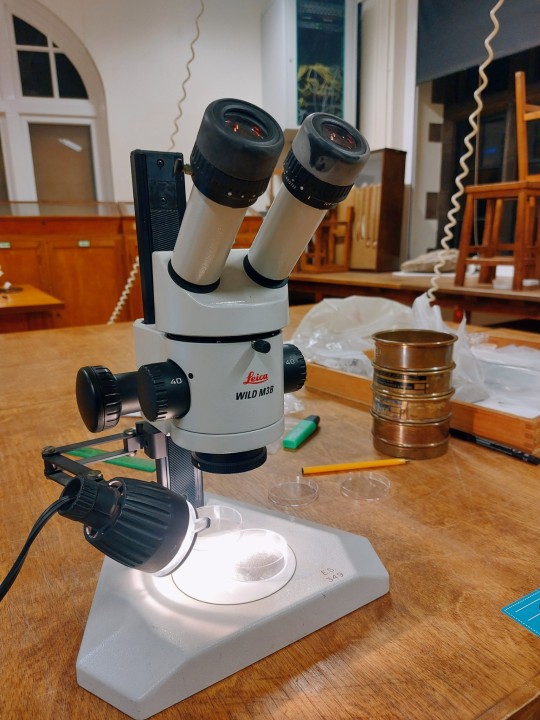

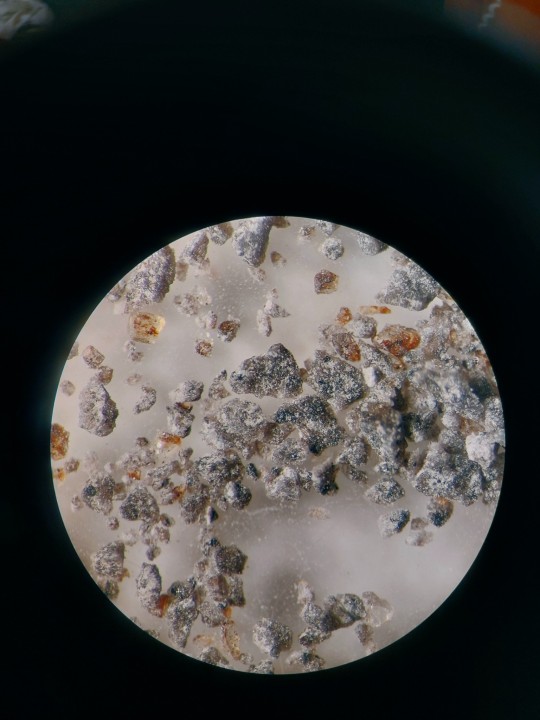

All in a night's work – 1 am in the lab sieving and olivine crystal picking. Started with the easiest of my samples, as there there was only one major phenocryst phase to look out for (olivine; see thin section below) and I didn't need to discriminate between ol, px and plag under the binocular microscope (yet). I will be studying olivine hosted melt inclusions down the line – these olivines are chock full of spinel inclusions (black dots in the olivines) though I'll have to see if I can find any glassy MIs. Reddish colouration of olivine is oxidation to iddingsite (usually) at the rims.
That said I am not made for such careful work! Basically sorting sand and silt grains! Accidentally flung a full dish into my lap one time, and have lost several soldiers from tweezer flinging throughout the night! My hands are not steady enough for this!

71 notes
·
View notes
Text
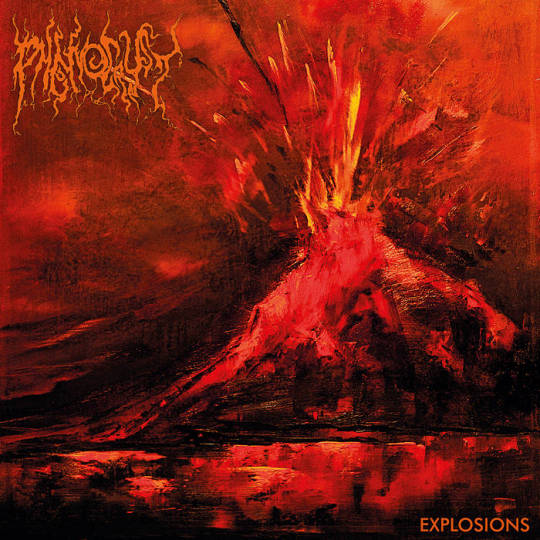
257. Explosions - Phenocryst (Death Metal, 2021 - EP)
Art by Nuno Zuki / Belial NecroArts
#metal#death metal#art#artwork#music#painting#drawing#illustration#heavy music#artist#cover art#heavy#volcano#red#fire#lava#magma#portugal#lisbon
9 notes
·
View notes
Note
Crystallization x Gigantification?
Is it because they are both named Yu? Or is it because both their Quirks names end in -ation?
New Quirk Name: Phenocryst
This Transformation type Quirk allows the user to form a humanoid, crystalline shell around their body. The user can act and move with the crystal like it was their own body. At their maximum size, the user becomes over twenty feet tall. The sheer mass makes the user strong and durable, taking powerful blasts without harming the main body. The user can be selective with this, like growing some crystals on their arms to protect themselves or to smash their opponents. The user can still move it regardless of its size. If the shell takes any damage, the user can grow more crystal to seal it. This gives the user an amazing Quirk for combat, their immense physical form and control over the crystal let them tower over the competition. They can form the chest to protect themselves, use giant crystal legs to get around, smash into foes with giant crystal arms, carry around their allies, or simply dazzle people with their crystal form. Though the crystal structure can still be broken through, potentially harming the user's main body. The user's size can be a problem as well, requiring them to be careful with how they move and act with the larger additions.
#My Hero Academia#Quirks#Quirk Marriage#Yu Hojo#Crystallization#Yu Takeyama#Mt. Lady#Gigantification
20 notes
·
View notes
Text


Porphyry is a type of igneous rock characterized by large crystals (phenocrysts) embedded in a fine-grained matrix (groundmass), often purple or reddish-purple in color, and was highly prized in antiquity for its distinct color and hardness.
0 notes
Note
Gonna need question 6 answered ASAP
6. Show us a rock!
alright, you get: Badlands Grapes!

(vesicular basalt with those greenish olivine phenocrysts, common enough occurrence around the Canaries if this image is from La Palma while I've seen it up close on Lanzarote)
0 notes
Text
Mysteries Carved in Stone
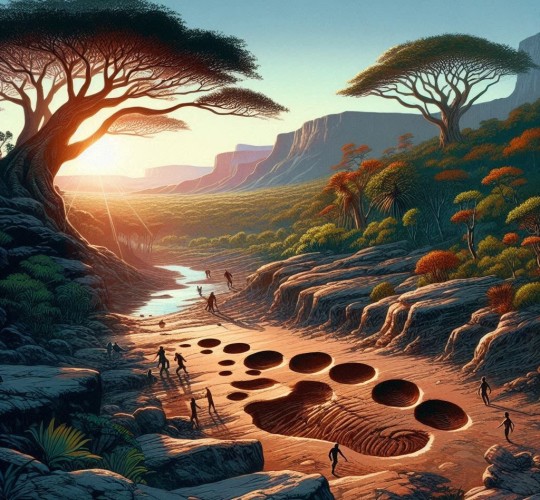
The Mpuluzi Colossus In the remote reaches of South Africa, near the borders of Swaziland, there exists a geological enigma that has puzzled minds and sparked imaginations. The Mpuluzi Batholith, a massive granite footprint etched into the Earth, stands as a silent testament to the giants of a bygone era. A Giant Among Us The footprint measures an astounding four feet in length, suggesting that the individual who made it would have towered at 24 feet tall.
Discovered in 1912 by hunter Stoffel Coetzee, this relic has remained untouched, and its origins are shrouded in mystery. A Tale of Two Theories Geologists and enthusiasts are divided on the origin of the footprint. Some argue that natural erosion created the marvel, while others, like Prof. Pieter Wagener, favor more otherworldly explanations. The granite’s age, dating between 200 million to 3 billion years, only deepens the mystery. The South African Indiana Jones Enter Michael Tellinger, a man whose passion for the ancient world has led him to champion the cause of the giants. His display of the Mpuluzi footprint has reignited the debate: Did giants once roam our Earth, or do we seek meaning in the meaningless?
An Unearthly Beauty Beyond the controversy, the granite itself is a marvel. Phenocrystic in nature, it boasts a blend of large and small grains that dazzle when polished. Merchandizers covet this spot, not for its myths, but for the beauty it promises to yield. The Verdict As we stand before the Mpuluzi Batholith, we are reminded that our planet holds secrets beyond our understanding. Whether the work of giants or the artistry of nature, this footprint invites us to look beyond our beliefs and marvel at the wonders of the ancient world. This article combines the intrigue of ancient mysteries with a modern understanding of geology, inviting readers to explore the possibilities of our planet’s past.
#history#science#ufology#aliens#religions#space#news#writers on tumblr#conspiracies#conspiracy theories#forbidden knowledge#ancient history#truth reading#truthrevealed#my truth#blog#writeblr#writing#writerscommunity#consciousness
0 notes
Text
since for some reason people seem really excited about this post i thought i'd share some pictures of what i'm up to:
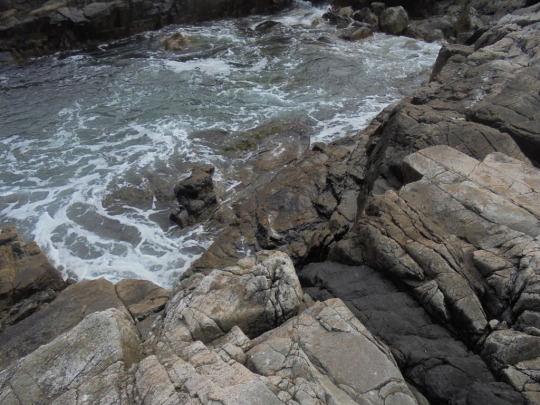
here's one of my dikes! she's so beautiful and i'm in love with her
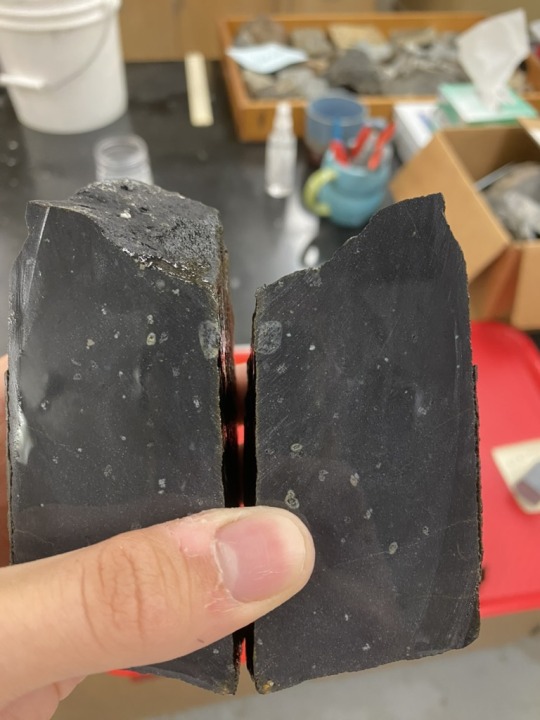
here's one of the samples i brought back but cut in half! shoutout the plagioclase(??) phenocrysts
list of evil things i'm doing to rocks for my research:
hitting them with hammers
kidnapping them (taking home samples)
cutting them into pieces with a saw
crushing them into a gravel
crushing the gravel to a fine powder
shooting x-rays at said fine powder (xrd)
shooting electrons at them (sem)
50 notes
·
View notes
Text
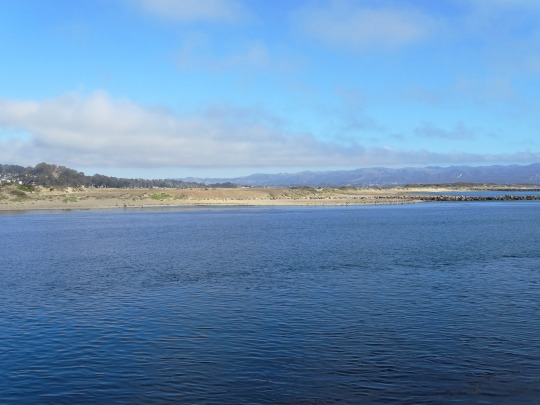
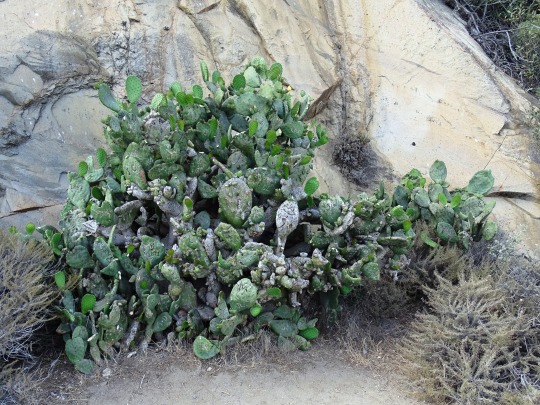
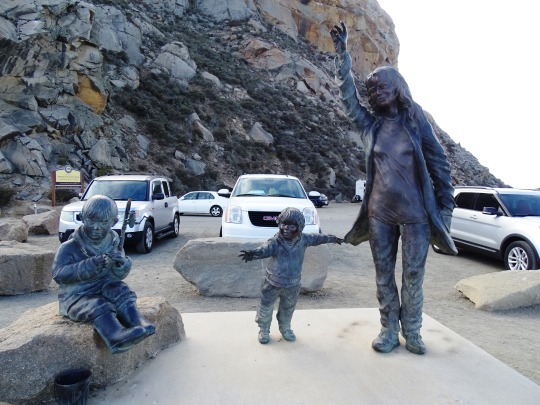
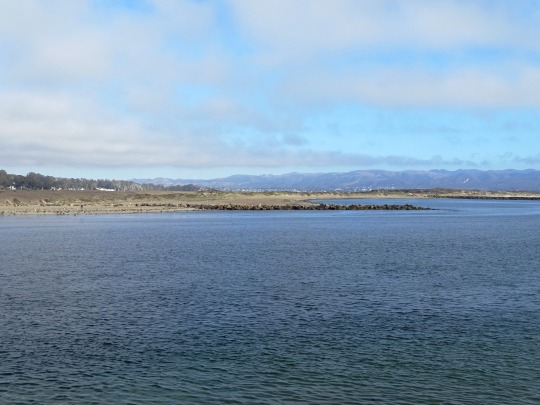
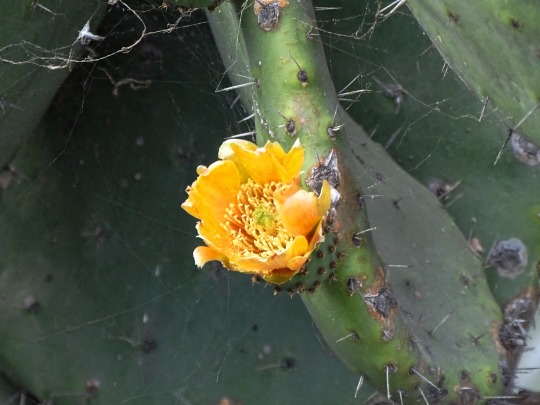
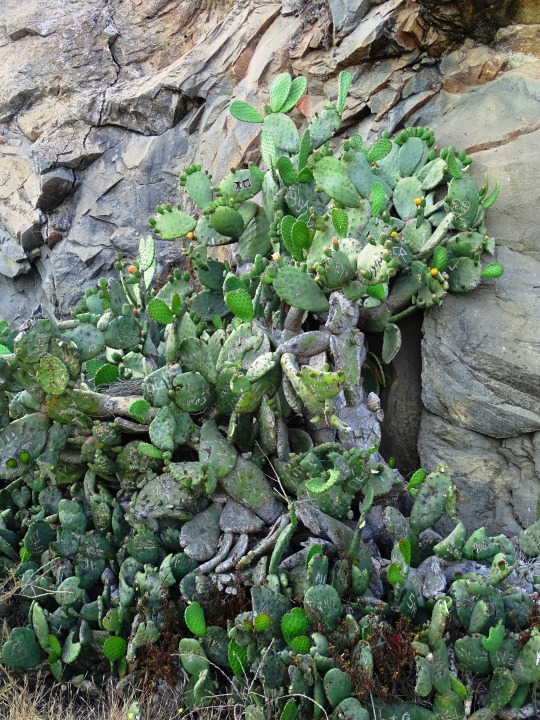
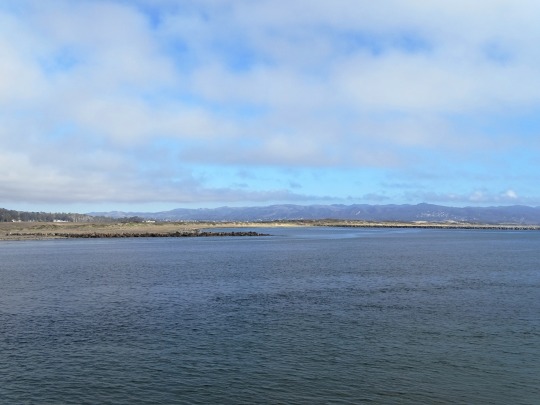
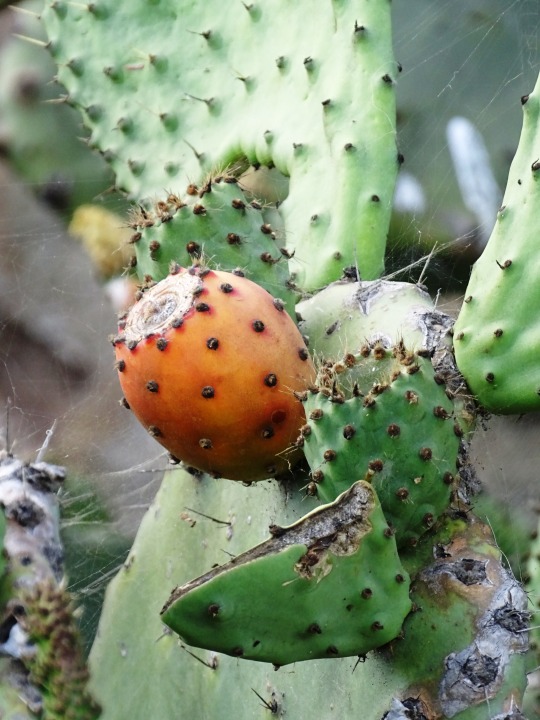
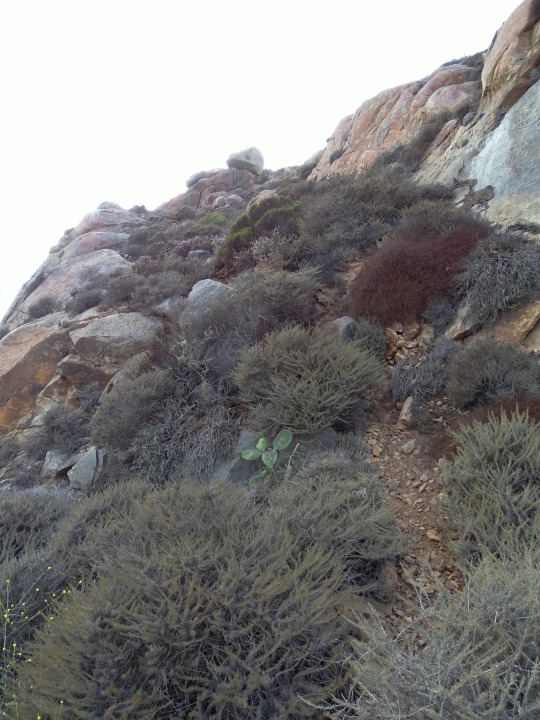
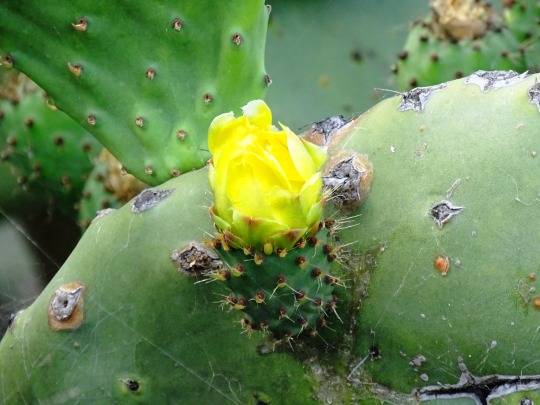
Morro Rock Ecological Preserve, CA (No. 2)
It [the Morro Rock] is composed mostly of dacite, an igneous, volcanic rock. It is a groundmass of plagioclase, with amphibole (hornblende), biotite, pyroxene (augite), quartz, and glass; it also includes phenocrysts of plagioclase. Its silicon dioxide (SiO2) content ranges from 63 to 69 percent.
The dacite volcanic plugs, lava domes, intrusive sheets, and felsitic rhyolite-dacite between Morro Rock and Islay Hill are part of the Morro Rock-Islay Hill Complex of the Oligocene epoch (from 27 to 23 million years ago). The complex lies east of the San Gregorio-San Simeon-Hosgri fault (the SG-SS-H fault). This complex is one of three probable sources of the volcanic clasts within the sandstone and conglomerate of the Miguelito and Edna members of the Pismo Formation in the Point Sur area 145–160 km (90-100 mi) to the north and west of the SG-SS-H fault. Based on paleomagnetic signatures, the Morro Rock-Islay Hill Complex was rotated 40 to 50 degrees, perhaps during late Miocene or early Pliocene time.
Source: Wikipedia
#Opuntia ficus-indica#Morro Rock Ecological Preserve#Morro Rock#Morro Bay#Pacific Ocean#sailing boat#Morro Bay Harbor#evening light#public art#sculpture#flora#nature#geology#volcanic plug#Fisherman's Family by Elizabeth MacQueen#Santa Lucia Range#Nine Sisters#San Luis Obispo County#travel#original photography#vacation#tourist attraction#landmark#cityscape#landscape#seascape#summer 2022#USA#architecture#prickly pear
1 note
·
View note
Text
An Igneous Rocks Primer, for Interested Parties
First off, what even is an igneous rock?
Put simply, igneous rocks are rocks made from molten material. We call the molten material lava when it is on the earth’s surface and magma when it is below the earth’s surface. When it has cooled and hardened, we call it an igneous rock!
There are 24 different types of igneous rocks in the tournament (and many more not in the tournament!). How do you tell them all apart?
I’m so glad you asked. We generally classify igneous rocks using two criteria: texture and composition.
More below the cut!
Texture, what does that mean?
There are a few forms that igneous rocks typically come in, and they have to do with how the magma or lava cooled and hardened.
Aphanitic (fine-grained) rocks are igneous rocks where you cannot see individual mineral grains with the naked eye. You would need a microscope to see the individual crystals. Aphanitic rocks form when a lava cools above the earth’s surface. For example, the lava that erupts from Mauna Loa and makes up the island of Hawai’i cools relatively quickly, and minerals do not have time to form large grains.
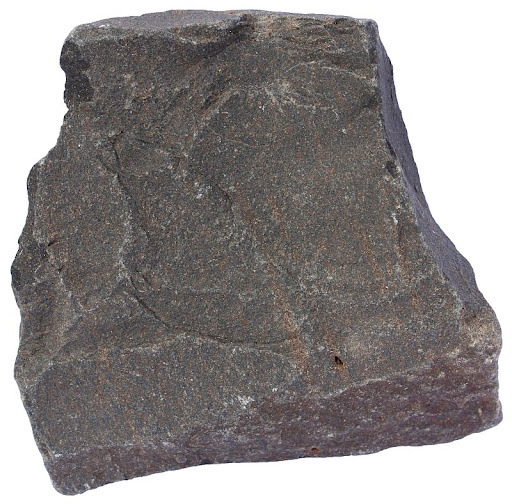
They cool quickly relative to what? Relative to phaneritic (coarse-grained) igneous rocks!
With phaneritic rocks, you CAN see the individual crystals making up the rock—like granite. Phaneritic rocks cool deep in the earth’s crust, rather than on the surface from a volcanic eruption. Magma chambers within the crust are insulated and therefore cool much slower than lava exposed to air or water at the earth’s surface. This slow cooling gives the minerals the time they need to crystallize and form grains big enough for us to see.
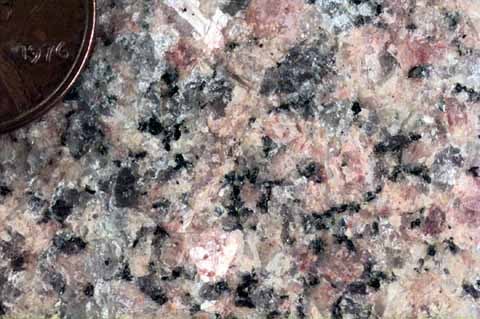
While aphanitic and phaneritic refer to the texture of the rock (fine-grained and coarse-grained), you will often hear rocks with an aphanitic texture being called “extrusive” rocks and rocks with a phaneritic texture being called “intrusive” rocks.
This is because the texture and size of mineral crystals directly correlates with how quickly the melt cooled, which correlates with where the rock originated. Extrusive rocks form quickly on the earth’s surface (externally) during events like volcanic eruptions. Intrusive rocks form slowly beneath the earths surface (in the crust) from bodies of magma (plutons) in the crust.
Some other igneous textures are:
Glassy (like obsidian) which happens when a lava cools extremely quickly even compared to aphanitic rocks.
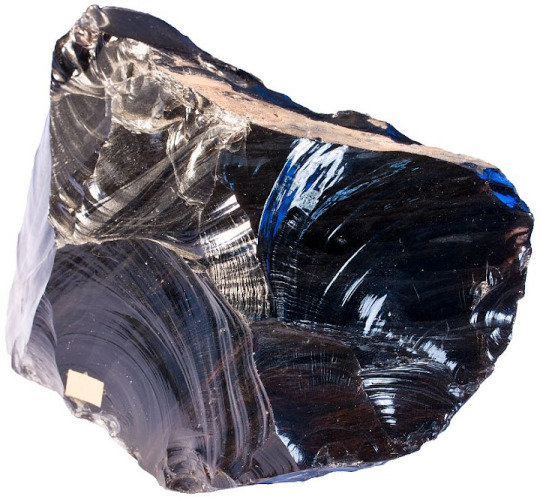
Vesicular (like pumice) which happens when a lava cools very quickly, while gasses are creating bubbles in the lava, so the rock forms with holes (called vesicles).
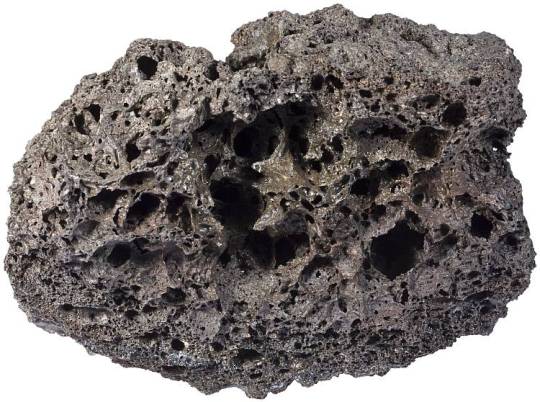
Porphyritic (there isn’t really a universally known example, except for maybe the rhomb porphyry) which happens when a magma cools in two stages. Different minerals crystalize at different temperatures (more on that later), so this rock looks like an aphanitic rock with isolated crystals (called phenocrysts). The most effective way I have ever heard this described is as a “chocolate chip cookie rock” because the phenocrysts look like the chocolate chips in the aphanitic cookie.
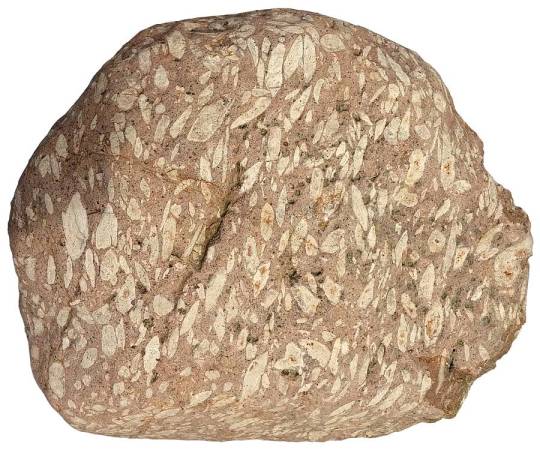
Okay, that was a lot, what about composition?
There are different minerals that make up the different types of rocks. There are about eight minerals that commonly make up igneous rocks and we use their relative abundances to define igneous rock compositions!
We describe igneous rock composition using a few words: ultramafic, mafic, intermediate, and felsic.
To understand what these words mean, I would like to introduce Bowen’s Reaction Series!
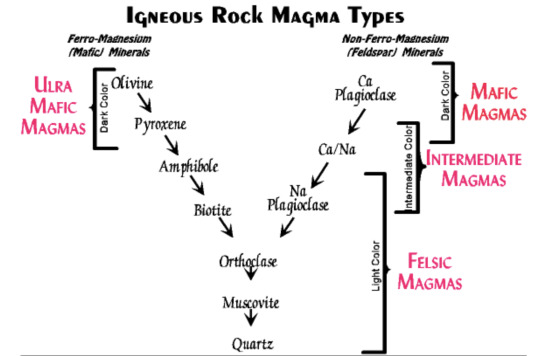
This image (and the image of granite shown above) are from this site which is an absolutely INCREDIBLE source for all kinds of geology information.
This diagram is organized based on the relative crystallizations temperatures of these minerals.
So, looking at Bowen’s Reaction Series (thanks, Norman Bowen!) minerals at the top (olivine and calcium (Ca) plagioclase) crystallize at higher temperatures than minerals at the bottom (quartz). Olivine crystallizes at a higher temperature than pyroxene, which crystallizes at a higher temperature than amphibole, and so on. Compare this to iron and water. Iron requires a lot more heat to become a liquid than water does. Similarly, olivine requires more heat to become molten than quartz does.
So, what does this have to do with ultramafic, mafic, intermediate, and felsic rocks?
Ultramafic rocks (like peridotite) contain almost entirely the minerals on the top left: olivine and pyroxene. These minerals contain a lot of iron and magnesium. Ultramafic magmas originate from the mantle.
Mafic rocks (like basalt) contain mostly minerals towards the top of Bowen’s Reaction Series: calcium (Ca) plagioclase, olivine, pyroxene, amphibole, and biotite. The minerals on the left branch contain magnesium and iron, while the minerals on the right branch do not. The parts of earth’s crust that make up the ocean floor (the oceanic crust) are mafic.
Another convenient pattern: all the minerals at the top of the reaction series (the mafic and ultramafic minerals) are dark in color.
Felsic rocks (like granite) contain mostly minerals on the bottom of the reaction series: quartz, muscovite, orthoclase, and sodium (Na) plagioclase. These minerals are, conveniently, light in color and lack iron and magnesium. The parts of earth’s crust that make up the continents (the continental crust) are felsic.
Intermediate rocks (like diorite) contain some dark/mafic minerals and some lighter/felsic minerals and therefore have a color somewhere in the middle. These rocks typically form above subduction zones, where the oceanic crust gets pushed under the continental crust (for example, on the west coast of the United States).
Wow. I knew you were long winded, but that was intense.
Yeah, thanks for sticking with me. It’s a lot of background to get to the point which is: we use two criteria to classify rocks.
Granite is a phaneritic (coarse-grained) felsic (light colored) rock.
Basalt is an aphanitic (fine-grained) mafic (dark colored) rock.
Diorite is a phaneritic intermediate rock.
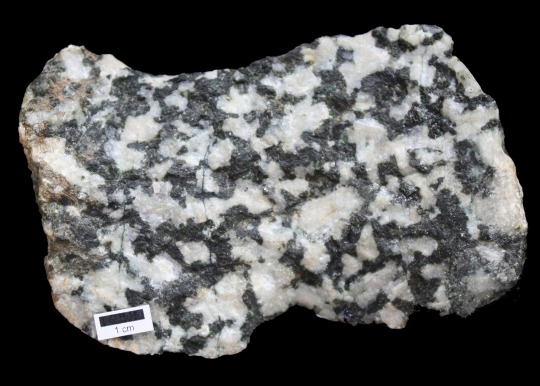
Here's diorite, by the way. See how it's half dark rocks and half light rocks?
Oh and one last thing, porphyritic rocks?
Right, now that you know about Bowen’s Reaction Series, it might make more sense to you that you could have pyroxene crystals (that crystalized over a long period of time) floating in a more felsic magma, which has not yet cooled because the temperature may be low enough for pyroxene to crystallize, but not for the minerals lower on Bowen’s Reaction Series to crystallize. If this magma were then to erupt, the magma would cool fairly quickly and form an aphanitic rock, but it would still have these pre-crystallized pyroxenes visible.
—————
Anyway, I wanted to throw this together so you all can at least have a reference (if you want it. If you want to vote based on rock pretty, I would be foolish to stop you) when I say things like “granite is a phaneritic felsic rock.”
If you want even more information about different volcano and eruption types and the rocks they produce, there will be a link to click here coming soon (don't ask me how soon, but feel free to send questions in the meantime!)
65 notes
·
View notes